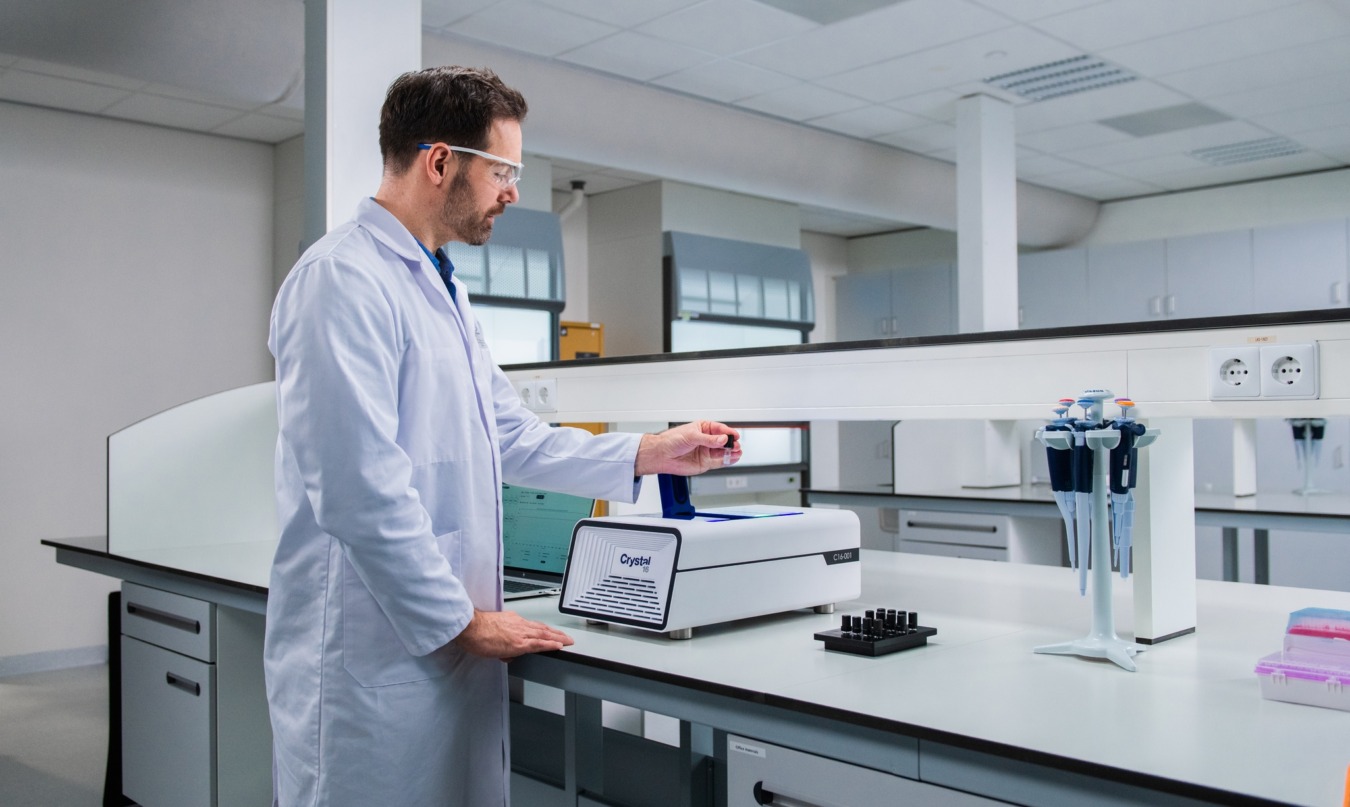
Technobis launches latest model of benchtop product with enhanced analytical capability
Crystallization technology provider Technobis Crystallization Systems has launched the Crystal16 version 3, a multi-reactor crystallizer for medium throughput solubility. The latest version has integrated transmissivity technology and enhanced analytical capabilities, in a streamlined unibody design, to reduce the time and resources consumed in crystallization experiments and analysis.
Based on what Technobis’ customers report, the HPLC method for solubility determination could take up to 112 hours to complete. To analyze 16 samples, scientists will spend eight hours preparing the samples, 32 hours carrying out the multistep processes, and 72 hours completing equilibration. Any errors significantly affect the quality of results, so laboratories often sacrifice more time and resources than is necessary to ensure a reliable result.
Introduction of the Crystal16
"To save time and reduce operating costs, Technobis introduced the scientific community to the original Crystal16 benchtop crystallization system in 2005,” explains Dr Carmen Guguta, global head of business development and marketing at Technobis.
The user-friendly multi-reactor could perform 16 different experiments and had integrated turbidity sensors and flexible software for generating simple phase diagrams and solubility curves, ideal for a wide range of industries.
However, as pharmaceutical laboratories, analytical chemists, and formulation scientists are now seeing increased demands to analyze more samples in less time, the efficiency of in situ laboratory equipment in increasing throughput is vital.
Enhanced in-line analytical features and new software
The new Crystal16 version 3 expands on the success of previous models using enhanced in-line analytical features and new software capabilities. With integrated transmissivity technology, scientists can easily determine clear and cloud points, resulting in solubility data and metastable zone width at an early stage. Solubility curves for four solvents can be generated in just four hours using less than 100 mg of material — an estimated 20 times reduction in the amount of material needed in previous Crystal16 models.
The version 3 also has improved particle detection capabilities for crystallization and nucleation studies. Scientists can control the temperature of all four block reactors to generate accurate temperature-dependent solubility curves in a matter of hours. Experiments can take place between -20 and 150 degrees Celsius at an accuracy of 0.5 degrees. Furthermore, chiller colling is also available with the Crystal16 V3, facilitating temperatures as low as -30 degrees with all four blocks in parallel.
Save time and resources
The new software package available with the Crystal16 V3 offers improved research and analysis capabilities. The program is automated and predefined temperature profiles for certain compounds can be uploaded for ease and flexibility. All solubility and transmissivity data for all four block reactors can be examined on the same interface, making data analysis simple and more efficient.
Upgrading your crystallization systems to take advantage of automated benchtop analytical equipment will help scientists save time and resources, while promoting productivity elsewhere in the laboratory.
Watch the entire Launch of the Crystal 16